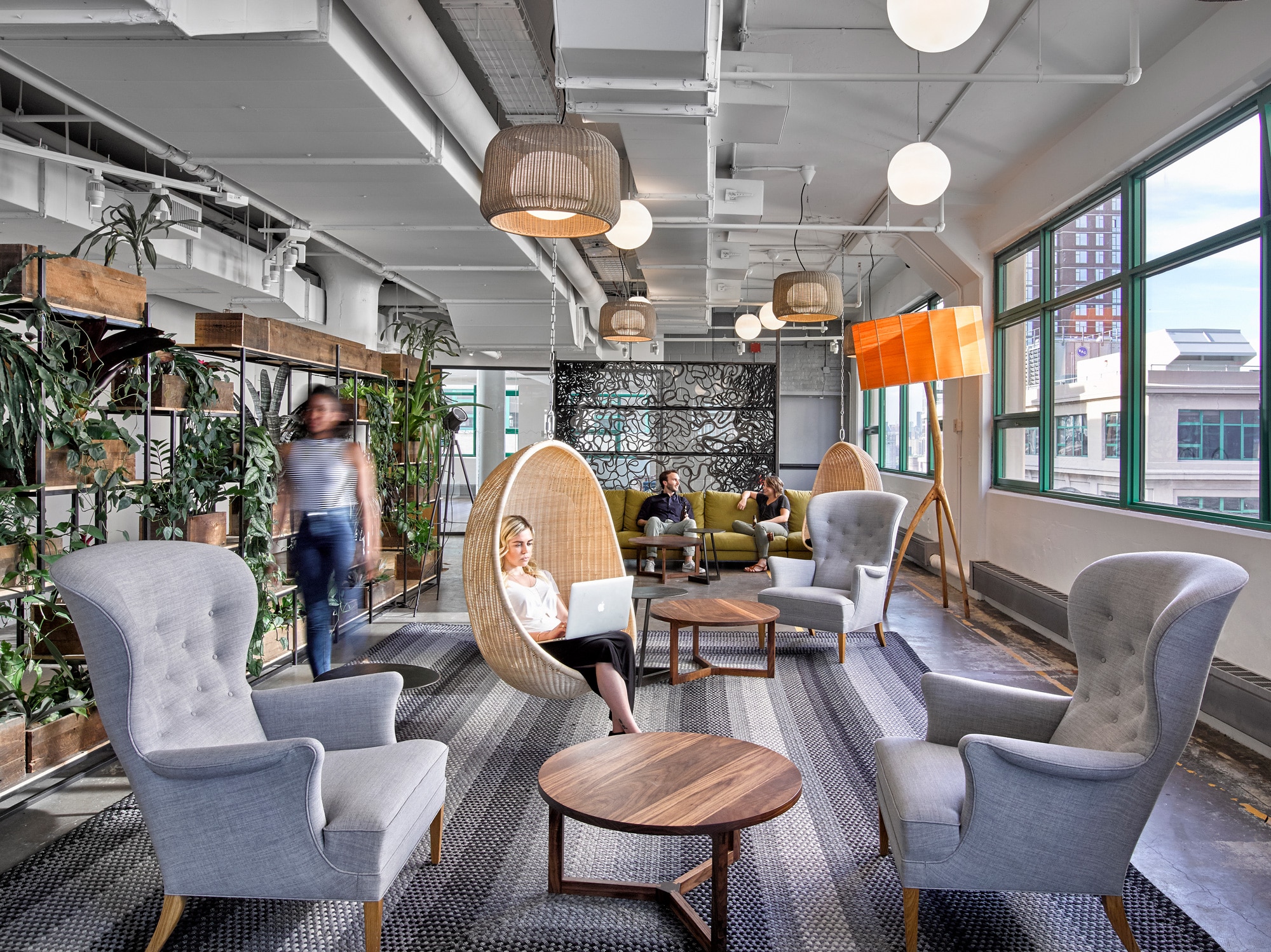
Etsy’s new Brooklyn headquarters is sustainable and cool.
[Photo: Garrett Rowland, Gensler]
The average worker doing a typical 40-hour week—cranking out emails, answering phones, sitting in drawn out meetings—will spend a total of about 10 years in an office over the course of their lifetime. For many of us, that means a decade of breathing volatile organic compounds emitted from copiers and printers, cleaning agents, and paints. It means 10 years of working under florescent lights, in cubicles and dark offices, with little exposure to the outside world.
Many workers are exposed to even more environmental stressors, from extreme temperatures to excess humidity to inadequate lighting, acoustics, and ergonomic design. It’s a recipe for a modern phenomenon known as sick building syndrome, where the indoor environmental quality of a building can contribute to asthma, allergies, stress, and even depression, resulting in increased absenteeism and loss of productivity.
Yet these dangers have also become the catalyst for some of the most innovative design trends in the green building industry. With a direct connection now drawn between human comfort and business productivity, the bottom line is fueling a green takeover from the startup to the Fortune 500.
Green offices aren’t just working smarter; they’re working kinder, both to employees and to the environments they exist within. These new spaces are rekindling a relationship with nature using everything from natural elements like salvaged wood to new concepts like biophilic design that have measurable benefits in human productivity, learning, healing, and psychological well-being.
We found three such spaces around the world, from the Netherlands to Brooklyn, that are bravely reimagining the future of the workspace—today—and already recouping the benefits.
